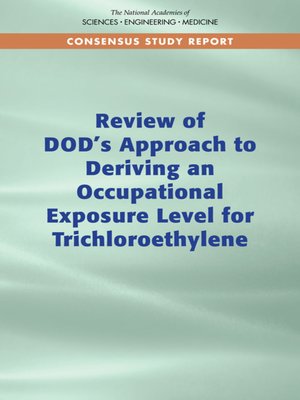Review of DOD's Approach to Deriving an Occupational Exposure Level for Trichloroethylene
ebook
By National Academies of Sciences, Engineering, and Medicine

Sign up to save your library
With an OverDrive account, you can save your favorite libraries for at-a-glance information about availability. Find out more about OverDrive accounts.
Find this title in Libby, the library reading app by OverDrive.



Search for a digital library with this title
Title found at these libraries:
| Loading... |
<p>Trichloroethylene (TCE) is a solvent that is used as a degreasing agent, a chemical intermediate in refrigerant manufacture, and a component of spot removers and adhesives. It is produced in mass quantities but creates dangerous vapors and is an environmental contaminant at many industrial and government facilities, including facilities run by the U.S. Department of Defense (DoD). It is important to determine the safe occupational exposure level (OEL) for the solvent in order to protect the health of workers who are exposed to its vapors. However, there are concerns that the current occupational standards insufficiently protect workers from these health threats.</p>
<p><i>Review of DOD's Approach to Deriving an Occupational Exposure Level for Trichloroethylene</i> makes recommendations to improve the DoD's approach to developing an OEL for TCE, strengthen transparency of the process, and improve confidence in the final OEL value. This report reviews the DoD's approach using a literature review, evidence synthesis based on weight of evidence [WOE], point-of-departure derivation, physiologically based pharmacokinetic modeling, extrapolation tools, and explores other elements of the process of deriving an OEL for TCE. It examines scientific approaches to developing exposure values and cancer risk levels, defining the scope of the problem, and improving hazard identification.</p>






